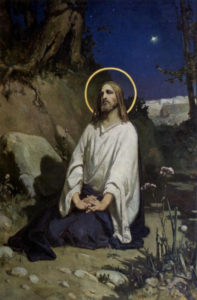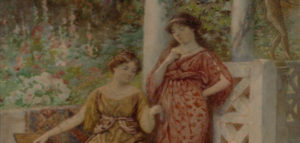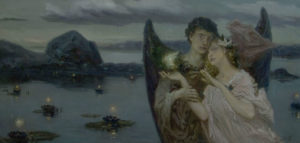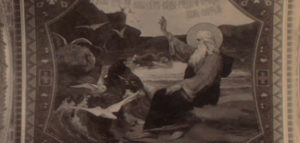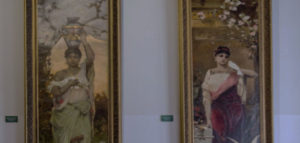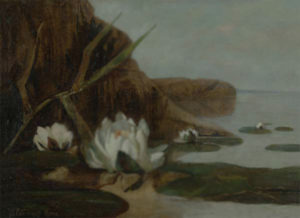He was born on November 30, 1848 in the village of Neborev, Warsaw Province, Poland.
1848 - 1921
Wilhelm Kotarbiński
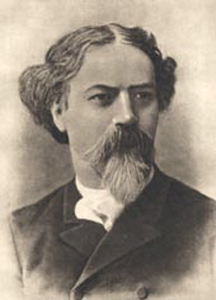
description
A Ukrainian and Polish artist and designer, who lived most of his life in Kiev, a bright representative of Art Nouveau.
His parents were Polish nobles from an ancient family and gave his son a good education. Wilhelm graduated from the classical gymnasium in Warsaw. During his studies, he attended an art school under the direction of Rafal Hadzevich, who taught him the skills of classical drawing and painting, and instilled in him a love for the art of the Renaissance.
Wilhelm Kotarbinski is the author of numerous philosophical and fantastic canvases, skillfully combining the features of Art Nouveau, Symbolism and a vivid personal style in his work. The artist was an outstanding draftsman, received many awards in Italy and the Russian Empire. In Kiev, Kotarbinski created paintings for the Vladimir Cathedral, which became the best example of church painting of the late nineteenth century and made the artist’s name popular throughout the country. The works of the Polish painter were in great demand; he carried out orders for the design of private houses of wealthy citizens. Some of his best works are 13 decorative panels for the house of patrons Khanenko in Kiev (now it is the building of the museum).
Key ideas :
– Wilhelm Kotarbinski’s work is very holistic and self-sufficient. The artist was not inclined to experiment with various trends in painting and constantly search for himself in art. From an early age, he realized his destiny, and persevered towards his goal, becoming an unsurpassed master in his own bright style.
– The basis of the artist’s works are often mythological, historical and religious (biblical) stories. In many paintings, there are a mystical beginning and fantastic elements. The heroes of Kotarbinski’s paintings are often nymphs, mermaids, and angels descended to earth, or simply stunningly beautiful women with a languid look and a noble posture. A rich imagination of the author surrounds them with mesmerizing landscapes, creating a sense of harmony and unity with nature, as in the plotted diptych “Two Beauties”.
– Kotarbinski was also a talented designer and a master of monumental painting. His work on the paintings of the Vladimir Cathedral in Kiev, which he performed together with Viktor Vasnetsov, amazes with its beauty, deep spirituality and scope. The best are considered frescoes “The Transfiguration of the Lord” and “The Last Supper”, “Pilate’s Court”, “Days of Creation” created together with Pavel Svedomsky. The artist also worked hard to decorate the interiors of private houses. He is the author of a series of decorative panels for the house of V. N. Hanenko, made in the art nouveau style. On these vertical canvases, Kotarbinski used a planar modeling, outlined by the smooth, twisty lines of the form, rich floral ornament and harmonious color palette. All these features make the author’s works the best examples of Modern in European art.
1848
1871
1875
1888
1890
1919
1921
The birth of the artist
He went to Rome
After receiving a state scholarship and borrowing money from his uncle, since his father did not encourage the artist’s choice of his profession, he went to Rome. Here Kotarbinsky continued his artistic education at the Academy of St. Luke led by Francesco Podesti. During the training, he won several major prizes for his drawings and was awarded a gold medal for painting “Vulcan chains Prometheus to the rock.” During the student days, Kotarbinski experienced great financial difficulties, as a result of which he became seriously ill and was on the verge of death. What saved the artist was his acquaintance with brothers A. and P. Svedomsky, who also came from Poland, lived and worked in Rome. Svedomskys helped the artist find suitable orders and allowed him to work in their studio.
Kotarbinski rented his own studio in Rome
After the graduation, he began to work as a master of academic paintings on ancient and mythological themes. Gradually, the artist became famous and began to receive serious orders. Kotarbinski rented his own studio in Rome, began teaching and organized his first solo exhibitions in Rome and Lviv.
Created a number of large-scale murals on religious themes
At the invitation of brothers Svedomsky, he went to Kiev to participate in the design of the Cathedral of St. Vladimir. The artist worked together with such famous painters as Vasnetsov, Nesterov and Vrubel. Within eight years, Kotarbinski, in collaboration with P.Svedomsky, created a number of large-scale murals on religious themes “The Transfiguration of Our Lord”, “The Last Supper”, “Pilate’s Court”, “Days of Creation” and others. These works made the artist a famous and recognized master throughout the entire Russian Empire.
Completed a number of works on the design of private houses in Kiev
Completed a number of works on the design of private houses in Kiev. The most famous were the murals in the house of Nicholas Tereschenko on Bibikovsky Boulevard, as well as panels and plafonds for the well-known patron of art, artist’s friend Bogdan Khanenko. In addition, the artist was engaged in painting in several churches and created his best paintings. Kotarbinski’s paintings were in great demand among the public, his works were acquired by well-known collectors, and among his admirers was even Emperor Nicholas II.
His apartment was constantly rummaged
After the First World War and the October Revolution, the artist’s work ceased to be in demand. His apartment was constantly rummaged, and Kotarbinsky himself was susceptible to various illnesses.
The death of the artist
His long-time acquaintance Emilia Prakhova invited the artist to live with her. In the house of Prakhovs, Wilhelm Kotarbinski died on September 4, 1921.

